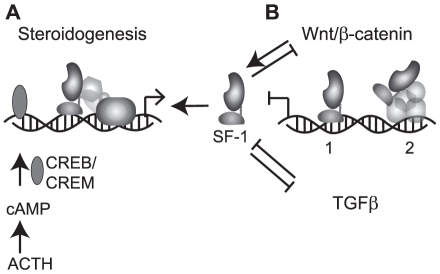Figure 6. Hypothesis of SF-1 mechanism acting both in cis and in trans.
(A) Classical SF-1 action on steroidogenic enzyme gene promoters. SF-1 binds promoters in cis and recruit coactivators and the general transcription machinery to activate transcription. Raised intracellular cAMP levels due to ACTH (in the adrenal) activation of MC2R activates the CREB/CREM transcription factors that work synergistically to further increase transcription rates. Input from Wnt/β-catenin signalling through direct binding of β-catenin to SF-1 can also increase transcription. (B) Possible mechanisms of SF-1 dependent repression of Wnt/β-catenin signaling. 1. SF-1 binds in cis to promoters but due to post-translational modifications and/or specific corepressor recruitment represses instead of activates target gene transcription. 2. SF-1 binds in trans to transcription factor complex and directs corepressors to the site to repress transcription. This could also be mediated by post-translational modifications like SUMOylation. A third option is that transcription factors or corepressors whose expression is activated by SF-1 acts as repressors of the TGFβ and Wnt/β-catenin signalling making SF-1 an indirect regulator.

